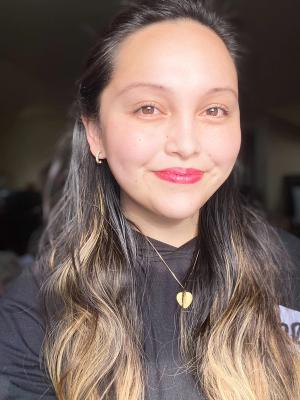What Is Conventional Medicine?
Is Conventional Medicine Just A Marketing Term?
Written by Camille Freking, MS Pharmacology - Genexa Partner on January 10, 2022
Over the past century, human understanding of how to treat and cure disease has rapidly expanded, leading to longer life expectancies than ever before. However, along with these scientific advancements has also come an increasing departure away from more traditional medical practices that evaluated an entire individual rather than just one medical issue.
The term used to describe modern medicine is “conventional medicine,” and it is often used when comparing modern medicine treatments to more traditional medicine treatments. So, what is conventional medicine and is it just a marketing term?
What is conventional medicine and is it just a marketing term?
Conventional medicine, also known as Western medicine due to its development and popularity in the Western hemisphere, is the type of medicine that most people in the United States are most familiar with.
Practitioners of conventional medicine base their approach to treating and preventing disease on modern science and consider the human body, its diseases and disorders, and treatments from a biophysical or biochemical perspective. Practitioners of conventional medicine include medical doctors (M.D.), doctors of osteopathy (D.O.), and allied health professionals, including registered nurses, physical therapists, pharmacists, psychologists, and more.
In addition to being referred to as Western medicine, conventional medicine is also often referred to as allopathic medicine, mainstream medicine, orthodox medicine, regular medicine, and biomedicine. Conventional medicine uses data and scientific research to come up with the diagnosis that is most likely correct and treatments that are the most likely to work based on research of large populations.
Practitioners of conventional medicine typically do not take an individualized approach to medicine until other treatments and diagnoses have been proven ineffective in a given patient.
The phrase “conventional medicine” is more than just a marketing term. It is not intended to be derogatory or to prejudice people into thinking a certain way about Western medical practices. Rather, the use of the term “conventional” reflects the prevalence of this type of medicine in Western society and the reality that most doctors and healthcare professionals are your local medical practice use this approach to medicine.
What other types of medicine exist?
In addition to conventional medicine, complementary and alternative medicine (CAM) traditions also exist. Complementary and alternative medicine is made up of many different parts, and some of the elements of one field may overlap with conventional medicine practices. For example, acupuncture is a type of therapy that originated in traditional Chinese medicine but is also widely used in conventional medicine.
Types of complementary and alternative medicine treatments include:
- Acupuncture
- Ayurveda
- Homeopathy
- Naturopathy
- Chinese medicine
Acupuncture
Acupuncture is an important component of traditional Chinese medicine that seeks to relieve pain, manage stress, and improve overall wellness by inserting very thin needles into different points in the body. In traditional Chinese medicine, acupuncture is used to balance the flow of energy throughout the body.
However, it is commonly used by conventional medicine practitioners in order to stimulate nerves, muscles, and connective tissue at strategic points on the body.
Acupuncture has a wide variety of applications, including relief of discomfort of the following conditions:
- Nausea and vomiting caused by chemotherapy
- Headaches and migraines
- Low back pain
- Osteoarthritis
- Respiratory disorders, including hay fever
- Dental pain
- Labor pain
- Neck pain
- Menstrual cramps
Ayurveda
Ayurveda, or Ayurvedic medicine, is a form of healing that originated in India more than 3,000 years ago. Practitioners of Ayurveda believe that physical health depends on maintaining a balance between the mind, body, and spirit and the universe at large. When the balance becomes disrupted, people feel sick.
Ayurvedic practitioners create a unique treatment plan for every individual based on their evaluation of your symptoms. Treatments may include blood purification, medical oils, enemas or laxatives, massage, or herbs.
Homeopathy
Homeopathy, or homeopathic medicine, is based on the belief that “like cures like” and the body
is capable of naturally healing itself. The practice involves using tiny amounts of herbs and natural substances to treat illnesses.
One example of a homeopathic remedy would be the use of red onion for the treatment of allergies. Because red onion makes your eyes water, it is used in treatments for allergies.
Homeopathic remedies are commonly used for the treatment of conditions like allergies, depression, rheumatoid arthritis, premenstrual syndrome, migraines, chronic fatigue syndrome, and irritable bowel syndrome.
Naturopathy
Naturopathy, or naturopathic medicine, is a medical tradition that combines both conventional medicine practices and approaches to healthcare that were popular in Europe during the 19th century.
- Naturopathic remedies include:
- Dietary and lifestyle changes
- Herbs and other dietary supplements
- Manipulative therapies
- Practitioner-guided detoxification
- Stress reductions techniques
- Homeopathy
- Exercise therapy
- Psychotherapy and counseling
Chinese Medicine
Chinese medicine, also known as traditional Chinese medicine (TCM), is a medical tradition that is thousands of years old and primarily relies on the use of acupuncture, tai chi, and Chinese herbal products to treat various ailments. Herbal products are used to treat medical problems like stroke, heart disease, bronchitis, the common cold, and mental disorders, among other conditions.
What are the differences between conventional medicine and holistic medicine?
Today, there are two main approaches to medicine, including conventional medicine and holistic medicine. The similarities and differences between the two approaches are outlined below.
Approach to Wellness
Conventional wellness focuses on biophysical and biochemical evidence of symptoms to make a diagnosis. For example, a patient with a skin rash will be evaluated by a doctor and treated with a medication that will resolve the rash. The practitioner may or may not evaluate the cause of the rash; the primary goal of conventional medicine is to resolve the symptoms and improve physical wellness rather than address the underlying cause.
Holistic medicine is a type of medicine that takes a whole-body approach to healthcare. Holistic medicine practitioners seek to improve health and wellness outcomes by emphasizing the connection between body, mind, and soul wellness.
In the example above of a patient with a skin rash, a holistic practitioner might ask questions about the patient’s diet, environmental factors, and other issues that could contribute to the patient’s symptoms.
Holistic practitioners consider addressing the underlying cause of a condition to be more important than resolving the symptoms specifically, as the symptoms would tend to resolve on their own after the root cause is addressed.
Types of Practitioners
Conventional medicine is practiced by licensed doctors, nurses, and other professionals that are evaluated and accredited by licensing boards and state and federal agencies. A conventional medicine doctor may either be a medical doctor (M.D.) or a doctor of osteopathy (D.O.), both of which are licensed to practice medicine, write prescriptions, and perform surgeries.
Holistic practitioners may or may not be accredited by a licensing board or agency. Some doctors of osteopathy incorporate holistic practices into their treatment plans alongside conventional treatments.
In general, medical doctors are more likely to use conventional medicine treatments. Medical doctors who choose to incorporate holistic practices alongside conventional medicine are often called integrative physicians but are still licensed and accredited; D.O.’s are also known for using a combination of conventional medicine and a more holistic approach.
Other types of professionals include Ayurvedic doctors, naturopathic doctors, and traditional Chinese medicine practitioners. In the United States, there is no nationwide license or certification for practitioners of Ayurveda or traditional Chinese medicine, so although the word “doctor” may be used, these practitioners are not licensed medical doctors. Naturopathic doctors attend naturopathic medical schools and take a separate board exam but are not recognized as medical doctors in the United States.
Types of Treatments
Conventional medicine primarily relies on treatments that include medications, surgeries, and other laboratory-based treatments. The ingredients used in conventional medicine treatments are often synthetic and produced in a laboratory with the sole purpose of treating or preventing specific symptoms.
By contrast, holistic medicine treatments may incorporate both conventional medicine treatments and traditional medicine treatments, such as herbs, supplements, and lifestyle changes. In general, these practices have been used for hundreds or even thousands of years but have often not been researched as thoroughly as other treatments.
Summary
Conventional medicine is a neutral term used to refer to commonly accepted Western medical practices that focus on research-based treatments such as medication and surgery.
Conventional medicine focuses on treating a patient’s symptoms and may not investigate the underlying cause of an illness or wellness issue. A growing number of conventional medicine practitioners are starting to incorporate complementary and alternative forms of medicine into their practices.





